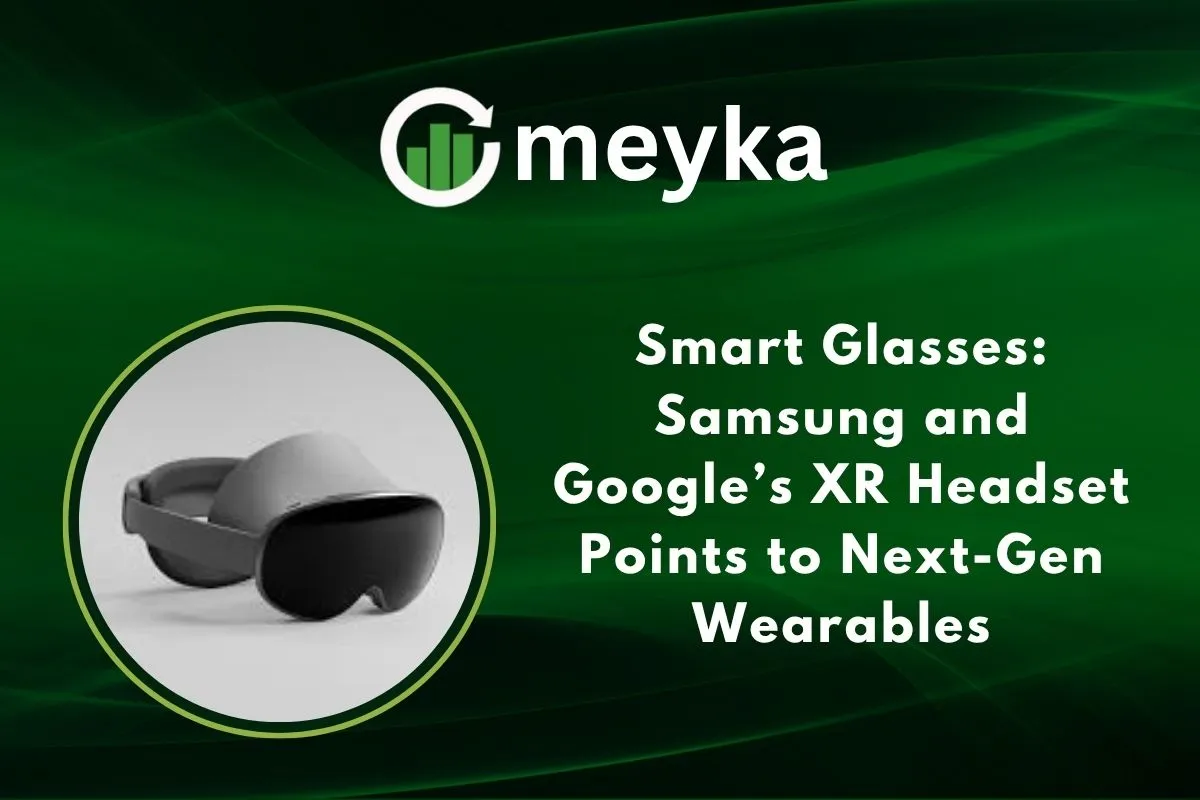Smart Glasses: Samsung and Google’s XR Headset Points to Next-Gen Wearables
We’re at a turning point for smart glasses and wearable tech. Samsung and Google have launched the Galaxy XR headset. It mixes the real world with powerful digital tools. This device shows where wearable computing could head next, toward lighter, smarter, and more useful glasses-like devices.
The rise of smart glasses and XR
Smart glasses are devices that put digital content in front of your eyes while you still see the real world. Extended reality (XR) is a catch-all term that covers augmented reality (AR), virtual reality (VR), and mixed reality (MR). Over the past few years, companies like Meta, Apple, and Snap have pushed immersive headsets and glasses. But many of those early devices were heavy or built more for labs and games than daily life. Now, makers want to shrink that gap and make smart glasses practical for work and everyday tasks.
Samsung and Google: why this partnership matters
Samsung brings display know-how and hardware design. Google brings software, AI, and ecosystem reach. Qualcomm supplies the XR chipset. Together, they built the Galaxy XR on the new Android XR platform. This collaboration matters because it pairs strong hardware with services people already use. If done well, that mix can speed real adoption of smart glasses.
What the Galaxy XR adds
The Galaxy XR is built with a micro-OLED 4K display and runs on Qualcomm’s Snapdragon XR2+ Gen 2. It includes eye and head tracking, spatial audio, and on-device AI features powered by Google’s Gemini system. Apps like Maps, YouTube, and Google Photos are rethought for immersive use. The headset aims for strong visuals and familiar app support, which helps users picture real value for work and play.
Features we expect to see in next-gen smart glasses
Smart glasses will likely take these design cues from Galaxy XR and future devices:
- Lightweight form: separate or smaller batteries to cut visor weight.
- High-resolution microdisplays: clearer text and images at eye level.
- On-device AI: natural language, live captions, image-based search, and helpful suggestions without sending everything to the cloud.
- Gesture and voice control: easier hands-free use for work or travel.
- Interoperability: tight links with phones, watches, and cloud apps for seamless workflows.
These building blocks will make smart glasses feel less like a novelty and more like a daily tool.
Market implications and competition
Galaxy XR’s $1,799 price positions it below Apple’s Vision Pro but above many VR headsets. This pricing aims at early adopters who want premium features without Apple’s higher cost. If Samsung and Google can attract developers and deliver real productivity wins, the market could expand into business, training, and pro creative work. However, broader consumer adoption will need lower-cost, lighter, and socially accepted smart glasses.
Challenges ahead
Smart glasses still face big hurdles:
- Battery life and heat: high-power chips and bright displays drain power fast. Many headsets need external batteries now.
- Weight and comfort: long wear needs careful weight distribution and soft materials.
- Privacy concerns: cameras and always-on sensors raise real legal and social issues. People can worry about being recorded.
- App and developer ecosystems: without strong apps, even great hardware feels hollow. Google and Samsung will need to woo developers to build truly useful XR experiences.
Past missteps, such as Google Glass, taught the industry that tech alone is not enough. Social norms and clear rules matter as much as chips and screens.
Use cases that could push adoption
There are practical places where smart glasses make sense now:
- Enterprise and fieldwork: hands-free manuals, live video support, and remote guidance.
- Health and surgery: heads-up patient data and imaging overlays.
- Education and training: immersive lessons and on-the-job coaching.
- Navigation and travel: live directions and local info overlaid on the street.
These real-world wins are likely the fastest path to mainstream use.
The road to “face-based computing”
We may be moving toward a future where our face becomes another computing surface. Smart glasses would not necessarily replace phones at once. Instead, they will extend them, offering rapid glanceable info and focused apps. When those features work without fuss, and when privacy is respected, smart glasses could become as common as smartwatches. That shift will take a few years, but the Galaxy XR shows what the first steps look like.
Conclusion
Samsung and Google’s Galaxy XR is not the final form of smart glasses. But it is a clear sign of progress. It blends strong hardware with Google’s software and AI. That mix could speed the move from bulky headsets to lighter, smarter eyewear. For smart glasses to win, makers must solve comfort, battery, apps, and privacy. If they do, we may soon carry a new kind of pocket on our faces.
FAQS:
Smart glasses use tiny screens, cameras, and sensors to show digital images or information in front of your eyes while you still see the real world.
Google smart glasses let you view directions, take photos, record videos, and get real-time information using voice commands, all without touching your phone.
Yes, many smart glasses can make and receive phone calls. They connect to your smartphone through Bluetooth and use built-in speakers and microphones for hands-free talking.
Disclaimer:
This content is for informational purposes only and is not financial advice. Always conduct your research.






